Game On! Our Student Videogames in Action
A MiddleWeb Blog
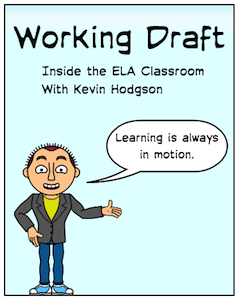
We are now coming to the tail end of that unit, which means that most students have completed designing, building and publishing their science-based video games. Now all I have do is play about 55 video games and assess them. As you can imagine, that takes a bit of time and patience.
Actually, you don’t have to imagine. Why don’t you come along with me and play a few of my students’ games? I’m inviting you, and you can even leave your arcade quarters at home. These games are on me.
Some back story
There are a few things you should know before hitting the play button. First of all, my students have done quite a bit of inquiry around game design, digital storytelling and technology beyond our time on the computers. The heart of what I am looking for from my students is a balance between a creating a fun game and a project that is framed with a story narrative arc and incorporates specific scientific vocabulary and concepts from our Geology unit.
This unit has unfolded over about five weeks time, but not every moment of class time is spent on gaming (although they would like that). We’re doing lots of other writing and reading activities and lessons along the way. Plus, access to computers in my school dictates a certain pace.
Most of our video game design work is done on a site known as Gamestar Mechanic, which I can’t write enough good words about. Students are highly engaged by the web-based platform, which teaches students all about elements of game design by having them play through “quests,” slowly earning enough experience to have publishing rights. While some of the more advanced students come to a point where the limitations of Gamestar Mechanic hem them in, most of my sixth graders are content and happy with what they are able to do here. There are free accounts to get started, and then there are premium services that cost money.
If you want to learn more about the specifics of our game design project, I encourage you to go to the website resource – Video Game Design – that I set up last year with my co-teacher and my science teacher colleague to document the learning and share out the resources we were developing. We also have a few students reflecting on camera about the project, providing a real inside look at where their thinking started and where it all ended up. Feel free to borrow, steal and adapt what you need.
Some examples of our games
And now, on to the video games. I have chosen four games for you to play. These games run the spectrum from being somewhat challenging to not-so-challenging. I won’t use the word “easy” in recognition that you may not have much experience with video games at all. Pay attention to the game dynamics, the use of the science concepts, and the story narratives. CLICK on each screenshot and you will be taken directly to the game in Gamestar Mechanic. You do not need an account to play the games, but you won’t be able to leave comments for students or rate the games in Gamestar Mechanic unless you’ve signed up.
Ready? Here we go…. The first game is called Layers of the Earth, by Gideon.
The second game is Adventures in Geology, by Victoria.
The third game is a game created by two students — Aiden and Aaryn — called A Journey Through Layers.
The final game has the least exciting name but is probably one of the better games created this year. It is called Science Videogame Project, by Ryan.
Can you beat these games? It not, let your students try their hand at them. The more folks who play the games, the more data my young designers have to analyze, and more likely they are to keep revising their work. (Yes, they revise … a lot). And leave a comment here at Working Draft to let me know how it went for you.
Game on!

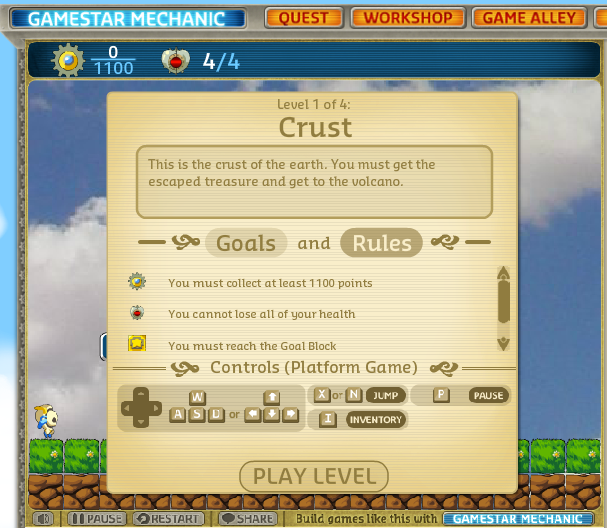
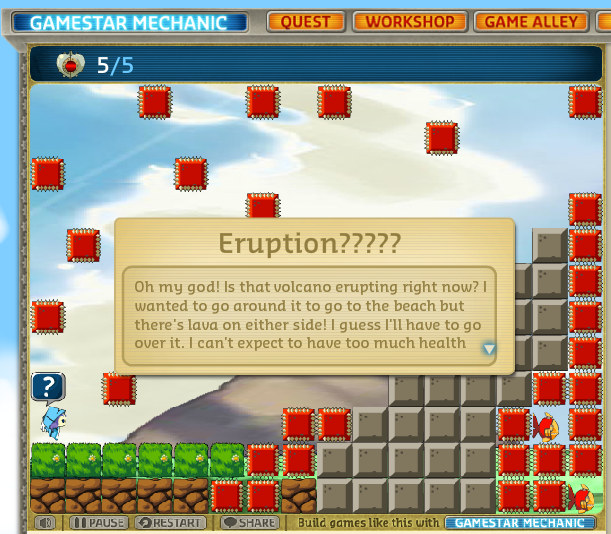
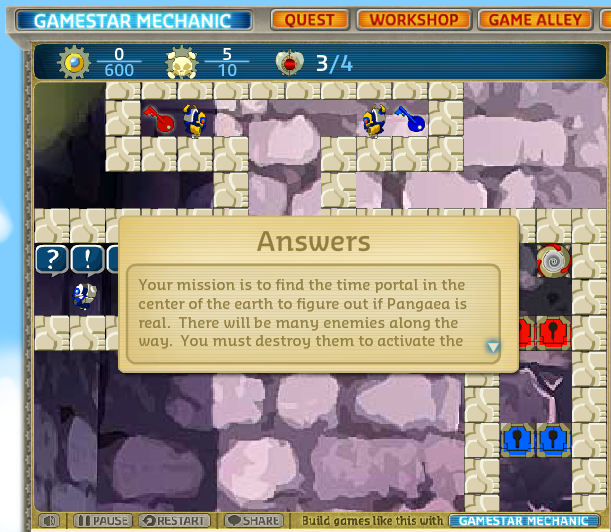
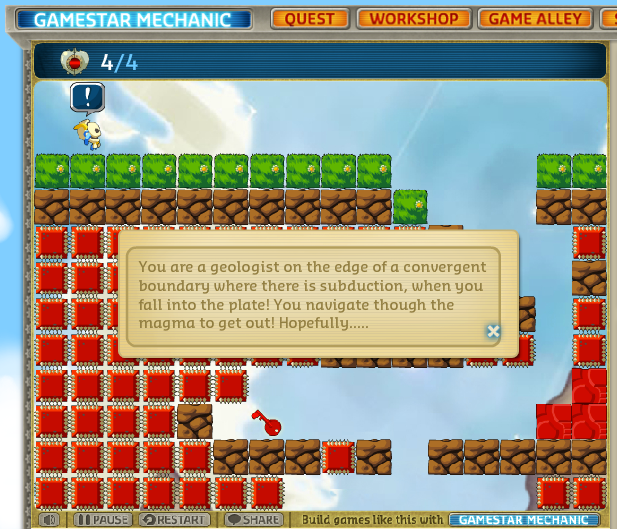

































I tried “Layers of the Earth” and boy do I stink! Guess I should have paid attention all those years ago when my son tried to get me to play the MANY video games he loved. This looks like a fun game, for those folks with more talent than me!
Seriously though, thanks for sharing this and for the helpful links. I’m thinking about trying a PBL unit on gaming with my gifted 5th graders next year, and this gives me a great place to start!